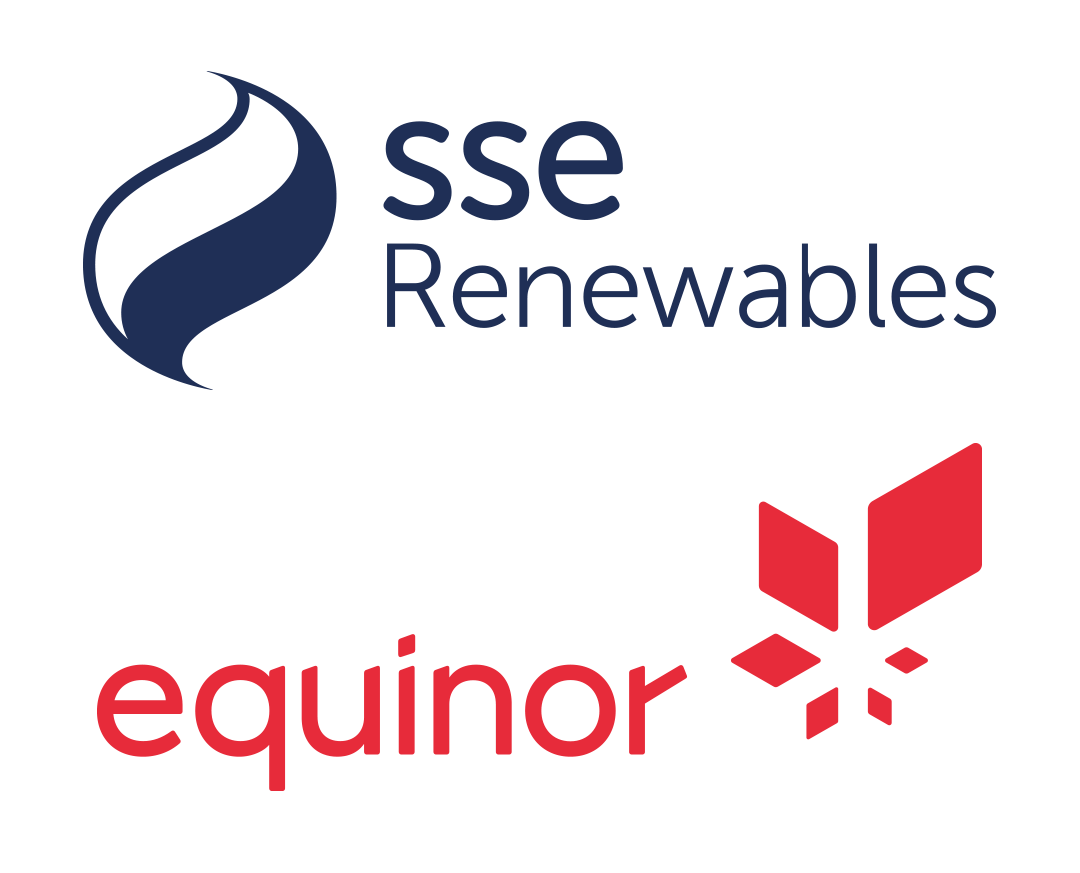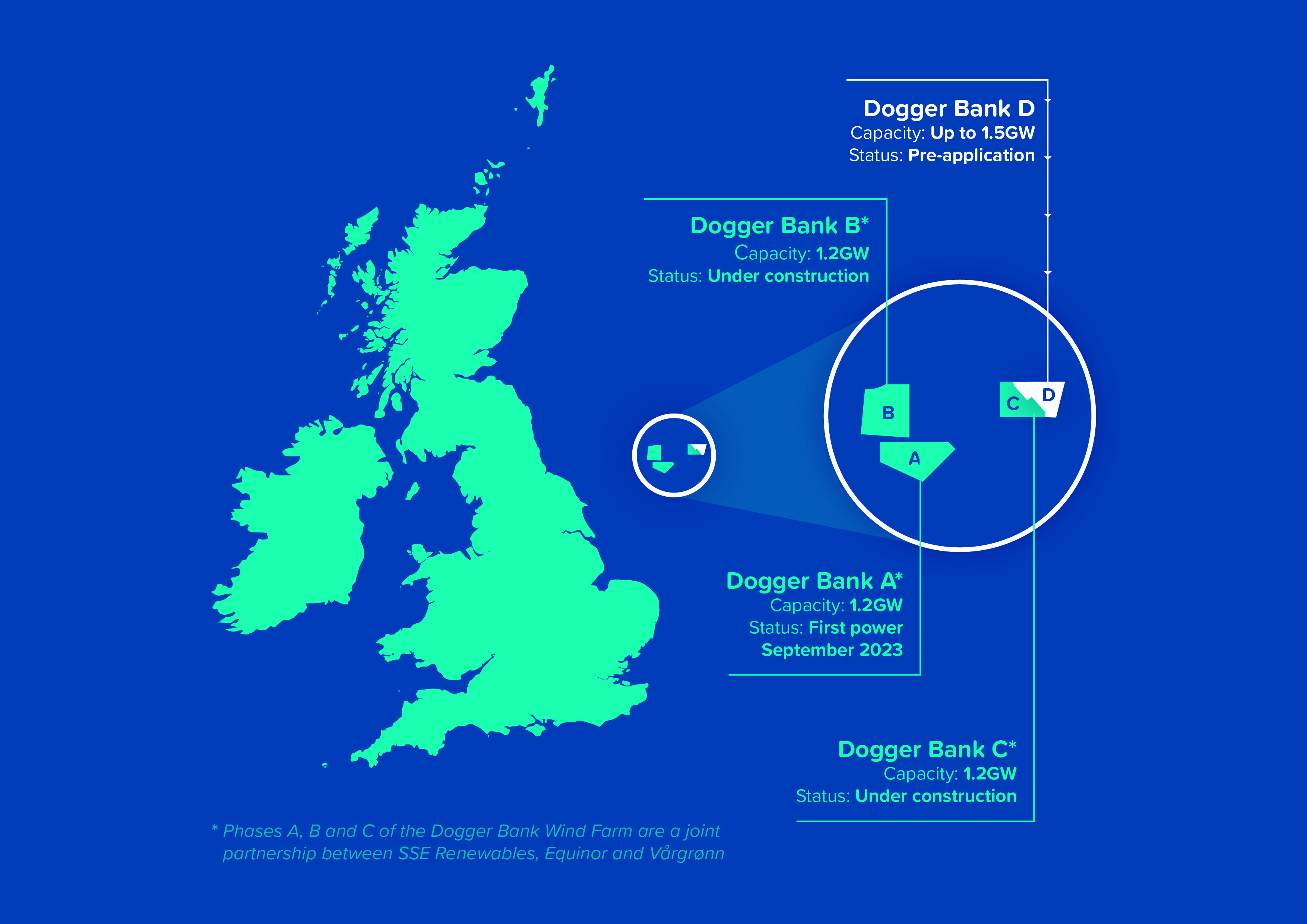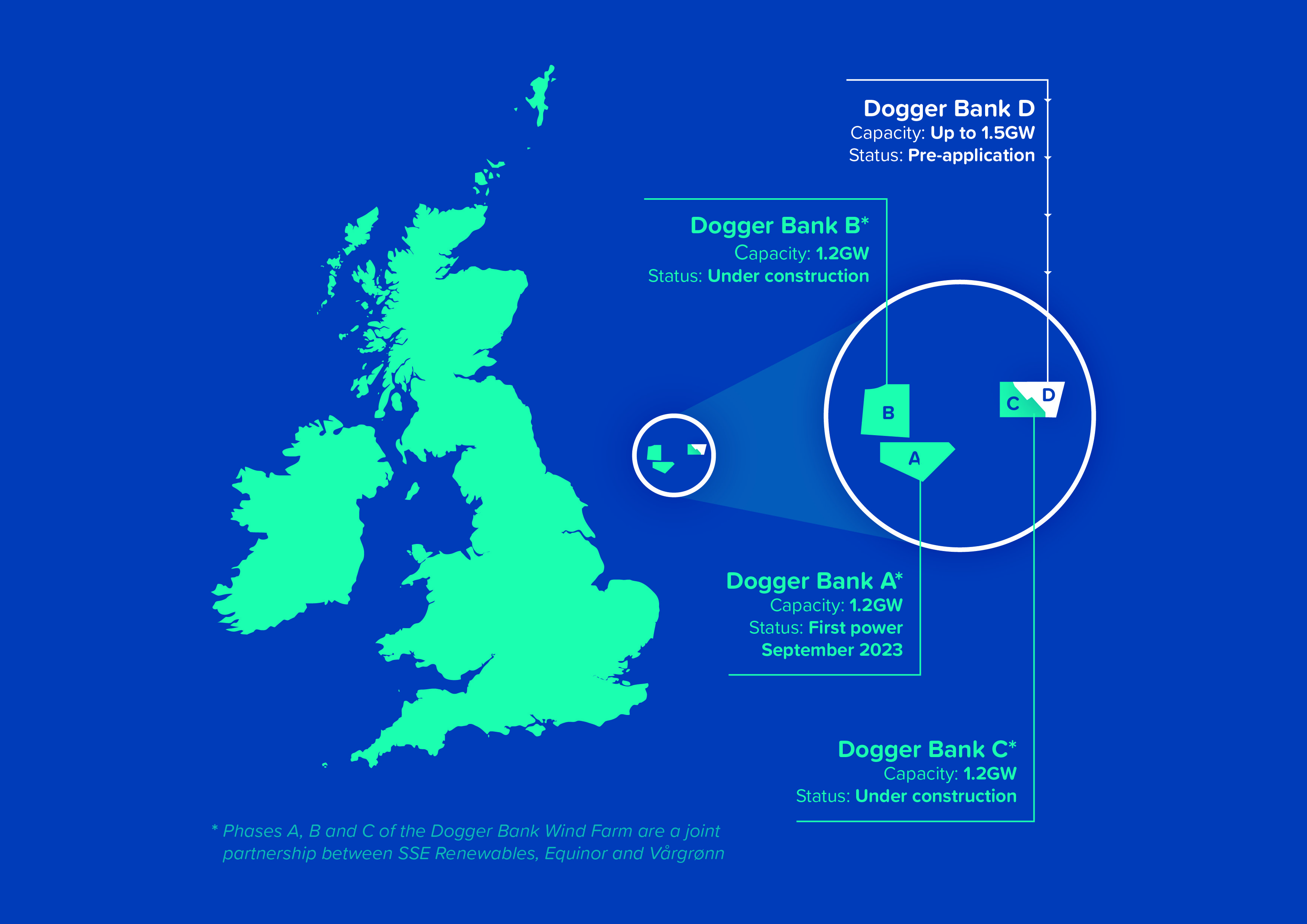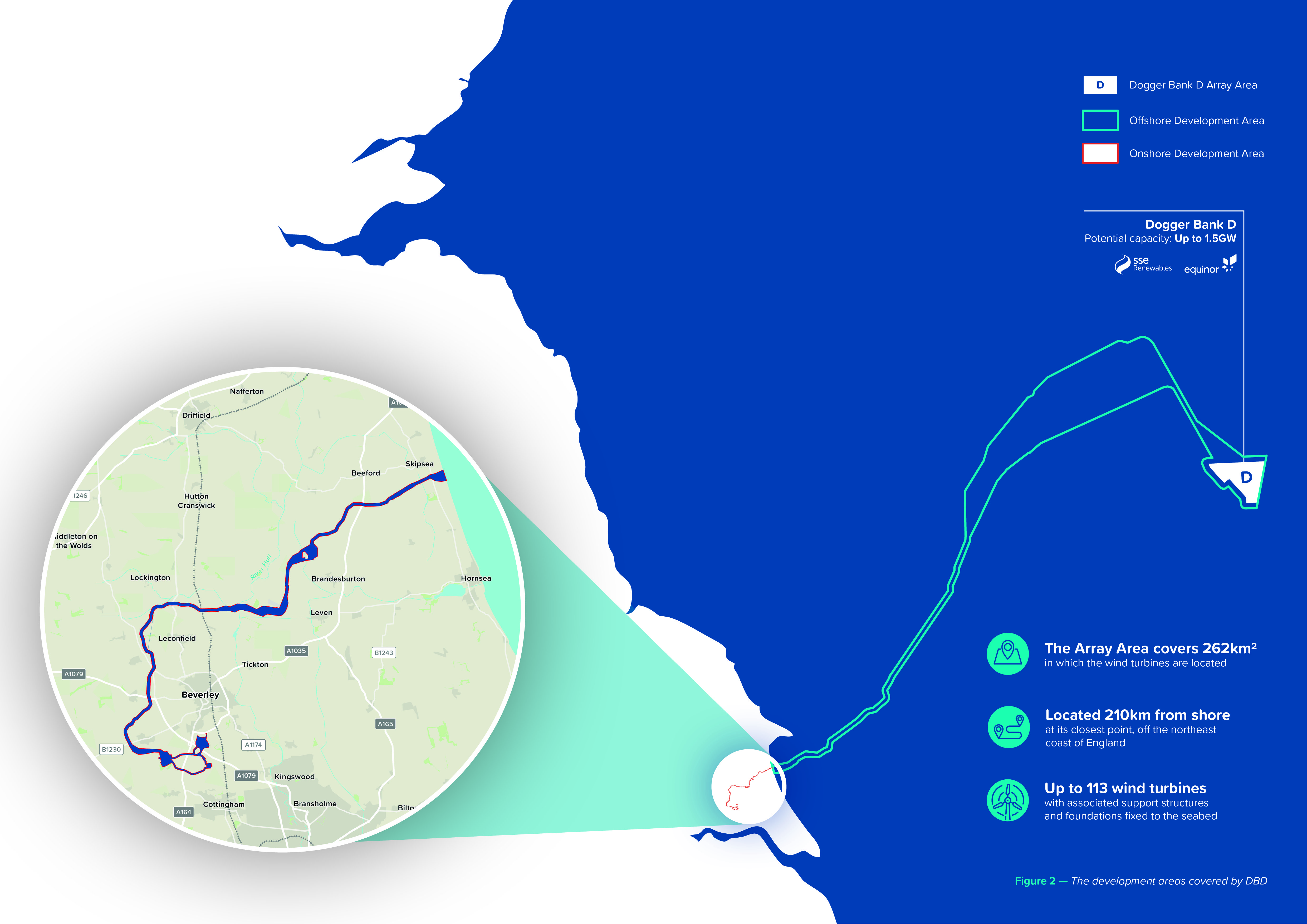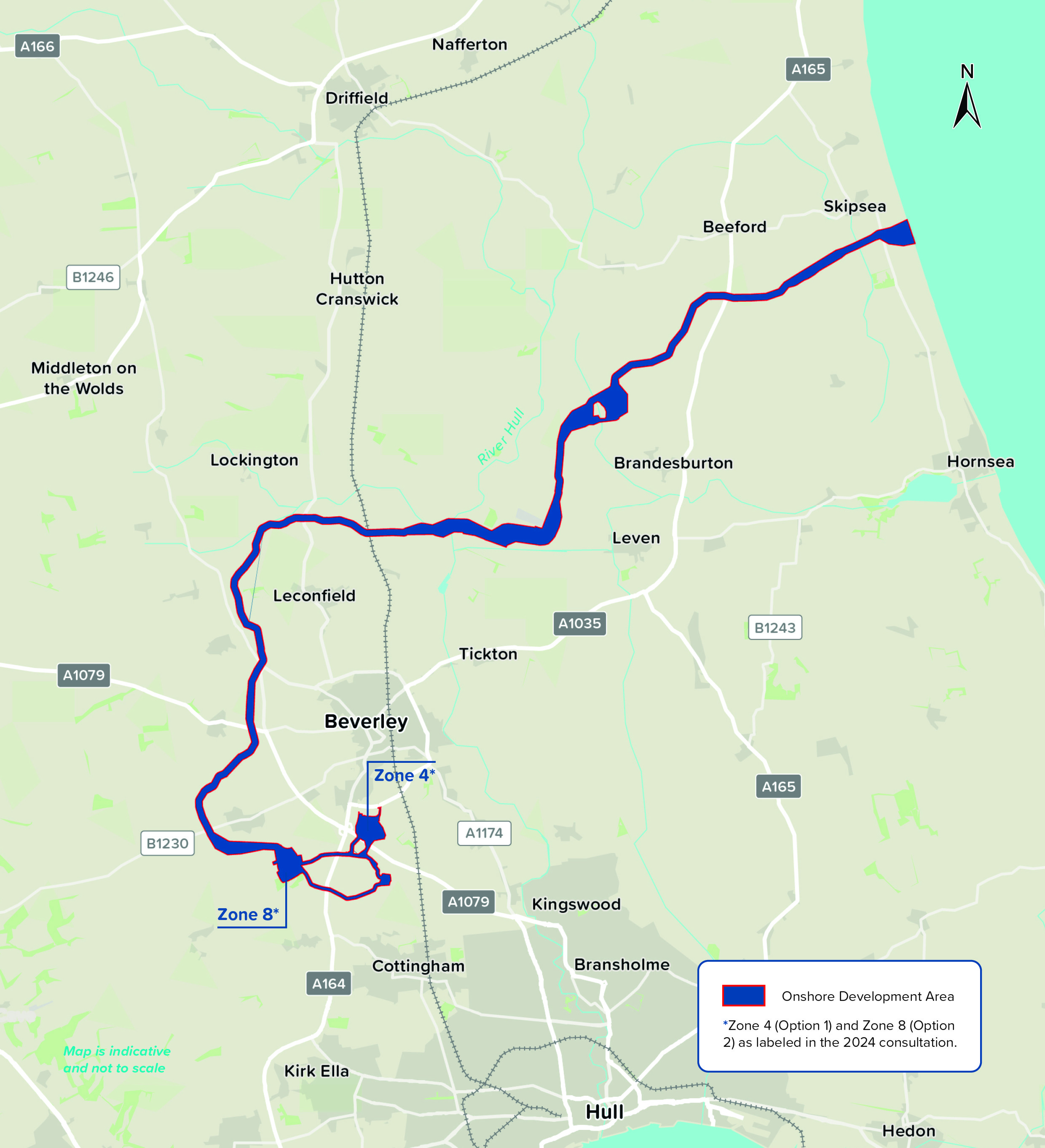Introduction
Dogger Bank D was announced in February 2023. This new phase seeks to maximise the capacity of the eastern portion of the original Dogger Bank C area.
Dogger Bank D is being developed at a crucial time for the UK’s energy sector. With advancements in offshore wind technology, the power from homegrown, clean renewables has the potential to ensure the UK can transition to a secure and affordable energy system.
The Project
Dogger Bank D is being developed by a 50 / 50 joint venture between SSE Renewables and Equinor. The Project is being developed at a crucial time for the UK’s energy sector. With advancements in offshore wind technology, the power from homegrown, clean renewables has the potential to ensure the UK can transition to a secure and affordable energy system.
Dogger Bank D would build on the success of the Dogger Bank Wind Farm — the world’s largest offshore wind farm currently under construction.
Granted development consent in 2015, the original Dogger Bank Wind Farm will generate 3.6GW of renewable energy across three phases: Dogger Bank A, B and C.
Read about Dogger Bank Wind Farm www.doggerbank.com
Proposals
Dogger Bank D will connect into Birkhill Wood, a proposed new 400kV substation located in the East Riding of Yorkshire. Birkhill Wood is being developed by National Grid Electricity Transmission (NGET).
You can read more about their plans here >
The Dogger Bank D Project was first announced in February 2023. We held our first phase of non-statutory consultation from 26 September to 7 November 2023, where we introduced our early proposals to local communities and stakeholders.
In spring 2024, we received confirmation of a grid connection location from National Grid Electricity System Operator (ESO). Following this, we submitted a Scoping Report to the Planning Inspectorate and received a formal Scoping Opinion in August 2024.
We held a second phase of public consultation on our updated proposals from 10 September to 22 October 2024.
You can read more about how the Electricity Systems Operator (ESO) is planning for the future electricity network here.
Summary feedback reports from both the 2023 and 2024 non-statutory consultations are available in the archive sections.
Following feedback from early consultation and further technical environmental and technical studies and assessments, the proposals for Dogger Bank D were refined. A period of statutory consultation took place from 10 June to 5 August 2025.
We presented offshore infrastructure for electricity generation, along with both onshore and offshore infrastructure to transmit the electricity produced. We also proposed Energy Storage and Balancing Infrastructure (ESBI)which would allow us to flexibly store excess energy and use it to help manage electricity supply and demand. These formed the basis of the proposals presented during the statutory consultation.
You can view consultation materials from all stages of consultation here >
Our Partners
Dogger Bank D is being developed by a 50/50 joint venture between SSE Renewables and Equinor, two of the world’s leading companies in the development and operation of offshore wind energy. Both companies were involved in the design and planning consent of Dogger Bank Wind Farm, the world’s largest offshore wind farm.
SSE Renewables is a leading developer and operator of renewable energy generation, focusing on onshore and offshore wind, hydro, solar and battery storage. Part of energy infrastructure company SSE plc, UK-listed in the FTSE100, it is delivering clean power assets to increase SSE’s operational renewable generation capacity as part of a five-year clean energy plan to 2027, the ~£17.5bn Net Zero Acceleration Programme (NZAP) Plus. This includes delivery of the world’s largest offshore wind farm in construction, the 3.6GW Dogger Bank Wind Farm.
SSE Renewables has a team of around 2,000 renewable energy professionals with a passion for championing clean energy delivery, each based across the markets in which it operates. It operates across its core UK and Ireland markets, as well as in carefully selected international markets in Continental Europe and Japan.
Equinor has been a reliable energy partner to the UK for over 40 years, providing a stable supply of oil and gas, developing the UK’s offshore wind industry, and pioneering solutions to decarbonise the UK economy. Equinor has a long track record of developing offshore wind farms in the UK, having built and commissioned into operation the Sheringham Shoal Offshore Wind Farm, Dudgeon Offshore Wind Farm and Hywind Scotland Pilot Park, the world’s first floating offshore wind farm.
Equinor has been operating in the UK for more than 40 years and possesses over 50 years of offshore experience in the North Sea area. Equinor aims to power seven million homes from its UK windfarms by 2030.
